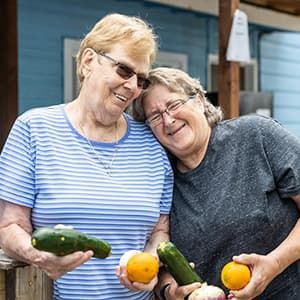


Take action to end hunger
Together, we can help our neighbors get the food and resources they need to thrive. Whether you're looking to contribute your time, skills, or resources, every action brings us closer to a future where no one goes hungry.
Hunger is a crisis, but it's a challenge we can overcome. Join us in tackling this issue head-on.



Together, we can end hunger

Volunteer ›
With millions of other food bank volunteers, your time makes a difference in the lives of your neighbors facing hunger.

Donate meals ›
Donating food is one way to support local food banks and programs while reducing food waste.

Host a food drive ›
Food drives are a great way to help our neighbors. Learn how to make your food drive a success.
More ways to take action
Make a Difference Today: Fight Hunger. Spark Change.
Now through April 29, donations at check-out and select purchases at Walmart and Sam's Club stores support people facing hunger.

Latest from the movement to end hunger
Check out our latest blog posts where you'll find inspiring stories of individuals making a difference in the movement against hunger. These stories show how together, we're making a difference, along with providing additional resources and guides on how to get involved.


















